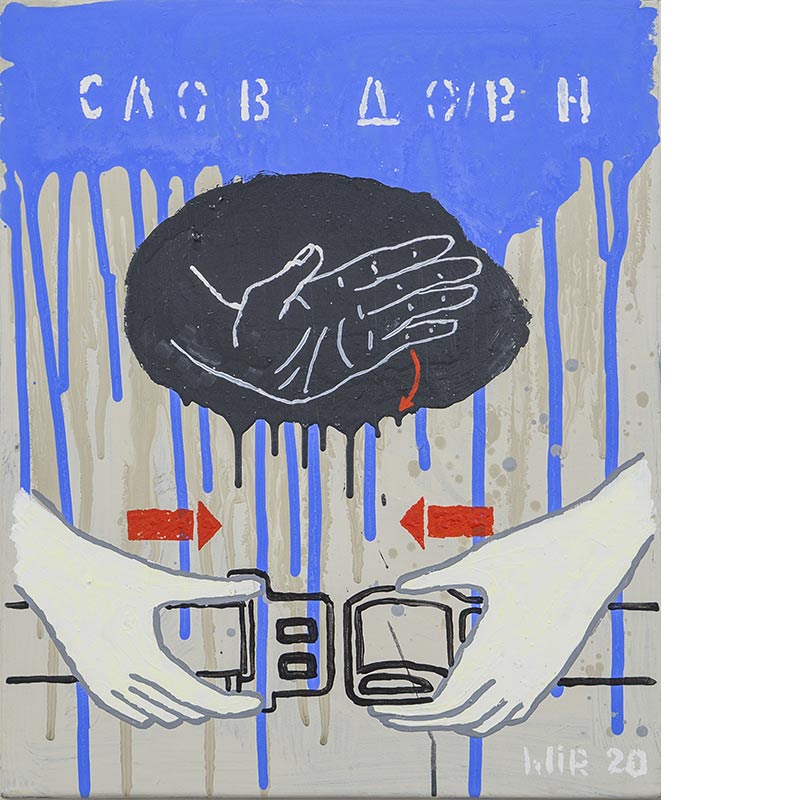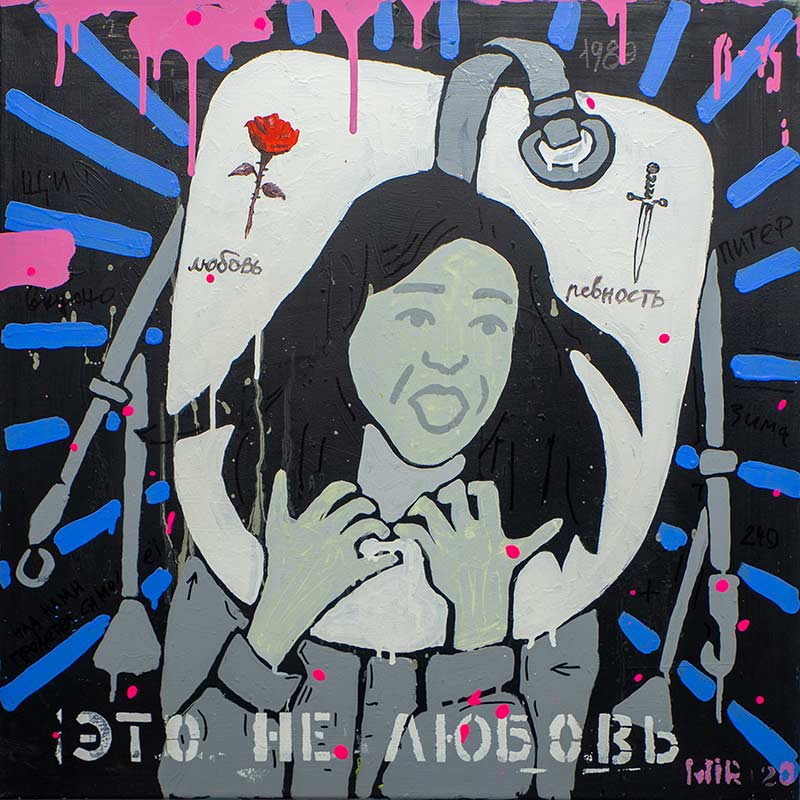MIR | Fasten your seat belt
Have a seat, lean back and "Buckle your seatbelts!", because the plane is cleared for take-off. The Hamburg-based artist MIR loads in OZM HAMMERBROOKLYN with his exhibition Fasten your seat belt to a special journey. Nothing here is what it seems at first glance. This also applies to the title of the exhibition chosen by the artist: because this is not just the English-language aircraft announcement to please buckle up, but also a symbolic message from MIR on the current situation and the measures taken. Through the "psychological buckle up" society is forced to live with restrictions. Sometimes you need a life jacket to keep yourself going, which is also a kind of art. The works of MIR all originated before the spread of the corona virus in Europe and therefore seem like a prophecy for the imminent future.
The artist has also been interested in flying, space travel and the atmosphere of travel metaphorically for many years. Will the trip be successful? Will we reach the goal? What if we crash? Those are recurring questions MIR in his work and which also run motivically like red threads through the works of the last few years. The exhibition has a high level of symbolism, which can only be understood after intensive study. Fasten your seat belt presents us content from the current social time and facets MIRs personal world of thoughts.
MIR takes up realistic aspects in his pictures by using a modern and functional style as well as a new design language that suits our time very well. Through his works on canvas, the artist not only presents us with pictograms – with a symbolic content – that we know from the instructions for use on airplanes and from travel and thus have a connection to reality, but also his own perception of the present day. At first glance, the descriptions of his own impressions are not critical or aimed at reforms in society, as is the case e.g. B. in the art of social realism was the case, but they are definitely thought-provoking and open to different interpretations. This is the case, for example, in the following image.
The title of the picture reads: This is not love, which means "This is not love" in German. was inspired MIR in this work from a Russian song in which this sentence occurs. Here, what is depicted – a woman with a dramatic expression, with the life jacket coming loose, the two symbols rose and dagger – and the work title, which can be seen at the bottom of the picture, go well together. The woman appears to be screaming her sorrow to the world to free herself from the oppressed feelings, while she is clutching a life jacket. Lovesickness is a very strong emotion that many people know from their own experience. In order not to drown in the swamp of melancholy, you need a life jacket in the associative sense, which gives you energy and optimism again. However, the image can also be understood as a metaphor of a person in a plane crash over the water. The life jacket could perhaps save them from sinking. In this image example, the complexity of MIRs works, which is characteristic of his art.
MIR has throughout his artistic career, similar to Kasimir S. Malevich, with his concept of Suprematism, developed his own and individual style of painting Inforealism, developed. To do this, he uses forms of design that have the essential attributes of pictograms and convey complex themes that lead to associations in the viewer and encourage us to deal with them.
MIR takes an artistic approach to the pictograms, which in terms of style are not reminiscent of a classic design. But he is also an artist and not a graphic artist or designer. Admittedly, the environment is unusual if one assumes the attachment of classic pictograms, but since it is also a matter of presenting works of art, the place of attachment fits again. In addition, the artist has left us clearly recognizable representations on the walls and floor that clearly indicate the inside of an airplane. A simple and quick reading of the motifs is also possible, even if not all possible interpretations are exhausted. In addition, life jackets and masks have the characteristic of internationality, because they are clearly recognizable signs of protection and safety all over the world. The requirements placed on pictograms are MIRs works of art by conveying not only technical but also psychological information about his pictorial motifs.
MIRs works fit very well into today's fast-moving and fast-moving times, because you can quickly absorb what is shown due to the simplified and factual style. In addition, the typography can be read quite quickly if you are able to understand Russian. For the artist, what is hidden and mysterious in art is important. In the best case, his works slow the recipient down for a moment and let them linger in front of his pictures for a certain amount of time. Only when you do this and are willing to engage contemplatively with his art can the riddles and messages be deciphered by him. This is not always easy with today's flood of images, but it is very worthwhile to deal with it. Especially when we appreciate the depth and magic that MIRs inherent in art, want to understand to some extent.
Are we still buzzing in the air with the plane, did it land safely or did we crash? There are no definite answers and that's what Fasten your seat belt so incredibly exciting and interesting.




